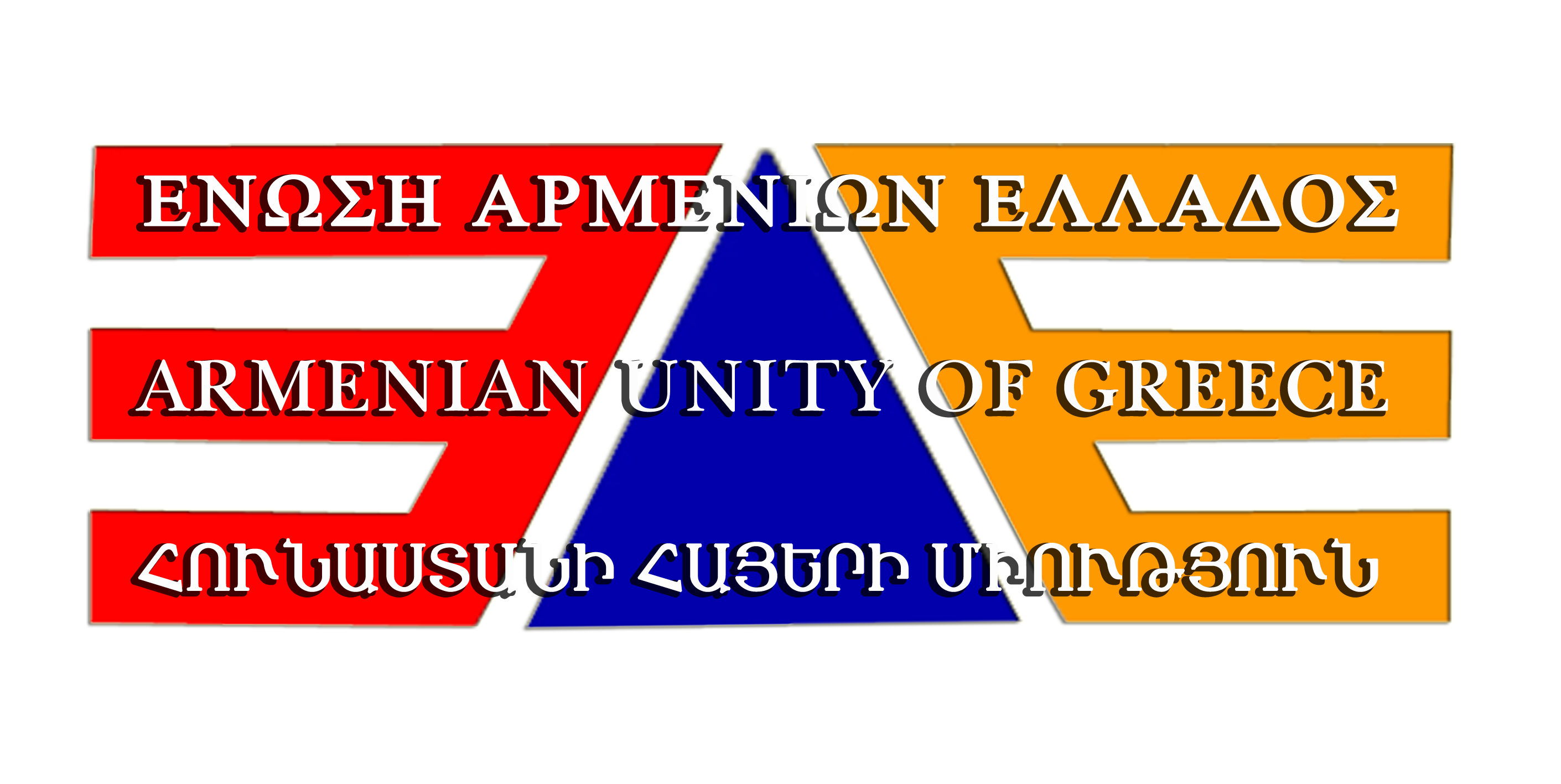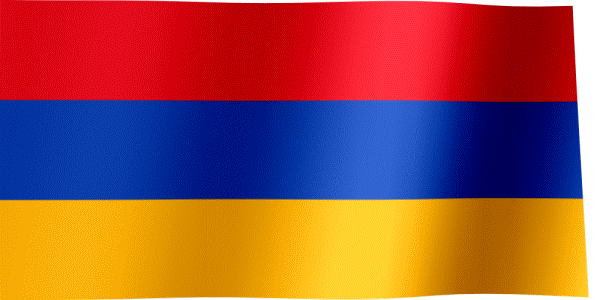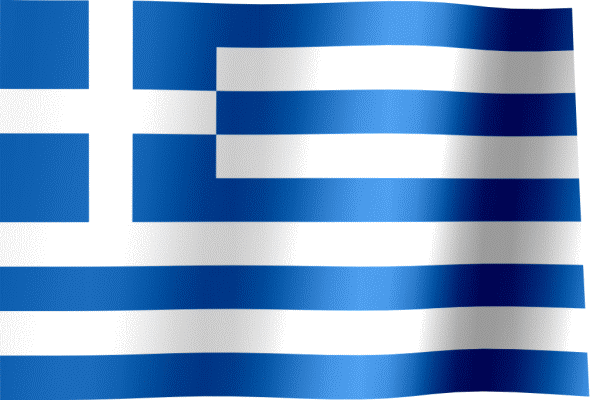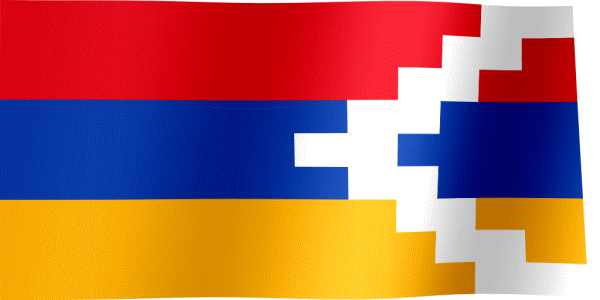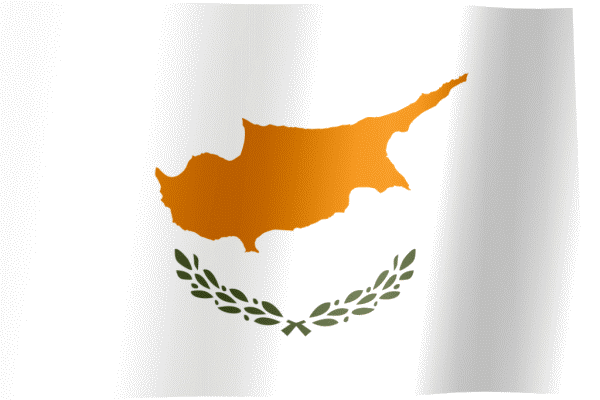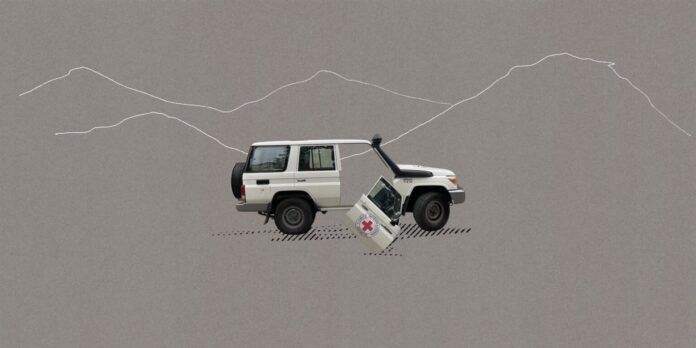All Armenian Men in Nagorno-Karabakh Are Now Targets for Arbitrary Detention [EVNreport]
On July 29, Azerbaijani border services kidnapped and detained an elderly man, Vagif Khachatryan, who was being transferred to Armenia by the International Committee for the Red Cross (ICRC) for medical treatment, and whose name was communicated and approved by the sides in advance. The transfers by the ICRC indefinitely stopped after this detention.
This arbitrary detention proves the validity of several scenarios identified in a recent article and other scenarios in a forthcoming one. At the same time, it makes explicit new but long-suspected threats posed by Azerbaijan to the Nagorno-Karabakh Armenians, as well as highlights a new level of long-exercised Armenophobia.
All Armenian Men Are a Target
One of the significant long-term concerns for Armenians opposing an Azerbaijani checkpoint and the use of Aghdam road is the history of repressions and kidnapping of Armenians at checkpoints operated by Azerbaijani security services both during the Soviet period and especially in the early 1990s when the conflict had started. What could have been perceived as paranoia by some, is now proving to be a very real concern after the abduction and detention of this civilian.
As I wrote in an article published shortly before the installment of the checkpoint in April, Azerbaijan was aiming to set up a checkpoint in the Corridor… “which would not resolve the issue of freedom of movement between Nagorno-Karabakh and Armenia but would deepen it further, since it could lead to an increased sense of insecurity… It is not hard to imagine how Azerbaijani security services controlling any checkpoint would treat the Armenians of Nagorno-Karabakh. It will most likely lead to the arbitrary arrests of Nagorno-Karabakh Armenian officials of local self-governance bodies and men of military mobilization age, and harassment of women and children as manifested in the incident of intimidating children trying to return from Armenia to Nagorno-Karabakh on January 17.”
The only difference between that prediction and this incident is that the arrested man is not of military mobilization age, but is 68 years old. The Azerbaijani President’s Office, Ministry of Foreign Affairs and the Prosecutor’s Office rushed to accuse him of having committed war crimes in the Khojalu region in 1991, claiming he is under international investigation and it is legal for Azerbaijan to arrest and prosecute him. They also made it explicitly clear that he is only the first person to be detained and prosecuted as part of “restoring justice” — or rather revenge. They ignored his medical condition, his being on route to receive medical treatment, being under the protection by the ICRC and having approved his name as part of the list of authorized patients for transfer in advance. Most Azerbaijani public figures and experts welcomed the arrest, writing that everyone who has taken part in a war against Azerbaijan should be prosecuted. They also noted Armenians missed their chance by not accepting the offer of “amnesty” in exchange for dissolving their governance institutions that Aliyev made in his speech two months earlier. An offer that sounded like a threat, like most of Aliyev’s statements, and yet another tool of coercion instead of the Baku-Stepanakert negotiations under the auspices of an international mechanism on the security and rights of Nagorno-Karabakh Armenians.
Most likely, the allegations against Khachatryan are a fabrication. Armenia’s Human Rights Defender stated that there is no data about the inclusion of the kidnapped man in any international wanted lists, and the Armenian Foreign Ministry underlined the use of false narratives by Azerbaijan. Even some Azerbaijani public figures hinted that it is technically unlikely to have reliable data in relation to the charges involving specific individuals related to the First Karabakh War. According to fact-checkers, the photo purportedly of Khachatryan that Azerbaijani authorities disseminated from a 1994 image published by the Russian Kommersant newspaper was in fact another man, an ethnic Azerbaijani in an area controlled by Azerbaijan in May 1994, and another photo was from Lebanon.
Even if the allegation presented to the detained man was true, it is impossible for him to have a fair trial in a country with one of the worst rankings in political rights and civil freedoms, no independent judicial system, and a state-sponsored policy of ethnic hatred towards Armenians as reported by many Armenian and international organizations. Only transitional justice mechanisms and an independent international investigation can define and ensure accountability for atrocities committed during an ethnic conflict. Arbitrary detention of a person on his way to medical treatment under protection of the ICRC is also a violation of international humanitarian law and disrespectful to the ICRC. The latter was even accused of “smuggling a war criminal” by some Azerbaijani figures.
Most importantly, given that every fit man over the age of 18 has served in the self-defense force of Nagorno-Karabakh based on conscription, whether during the First Karabakh War, or during the Four-Day War in 2016, or the 2020 Artsakh War, Azerbaijani security services may increasingly target and detain every male in Nagorno-Karabakh, which may turn into a deprivation of Nagorno-Karabakh’s male population resembling the Srebrenica scenario. Some Azerbaijani social media users even suggest that underage boys are also a legitimate target since they are potential soldiers. Without male accompaniment, women and children may not feel safe to cross the checkpoint either, and if they take a risk, their safety is not guaranteed. The reports that Azerbaijani doctors will start inspecting patients being transferred to Armenia for medical treatment, is also a human rights violation that precipitated a feeling of psychological terror and a fear of degrading treatment.
It is important to note that all three wars in Nagorno-Karabakh were launched by Azerbaijan, therefore Armenians were defending themselves. Self-defense is an inherent and fundamental human right, and living in an unrecognized de facto state or being part of the national liberation movement doesn’t give a green light to states to exercise collective punishment towards them.
In accordance with the UN General Assembly Resolution 2625 (XXV) adopted in 1970, “every State has the duty to refrain from any forcible action which deprives peoples […] of their right to self-determination and freedom and independence […] The use of force to deprive peoples of their national identity constitutes a violation of their inalienable rights and of the principle of non-intervention.” An extract from the International Court of Justice Advisory Opinion on the Kosovo case from 2010 underlines that “[n]o State can invoke territorial integrity in order to commit atrocities (such as the practices of torture, and ethnic cleansing, and massive forced displacement of the population), nor perpetrate them on the assumption of State sovereignty, nor commit atrocities and then rely on a claim of territorial integrity notwithstanding the sentiments and ineluctable resentments of the ‘people’ or ‘population’ victimized. […] Such atrocities amount to an absurd reversal of the ends of the State, which was created and exists for human beings, and not vice-versa.”
Escalation of False Narratives Aimed to Stigmatize Armenians
On the eve of this arbitrary detention, the Azerbaijani propaganda machine intensified its long-term war of false narratives and revisionism of history in relation to the conflict, and for the first time, started aggressively and explicitly calling Armenians Nazis. The outlet “Azerbaijani Times” published an article with a provocative headline “Hitler is More Humanist Than Any Armenian Leader” referring to Armenian PM Pashinyan’s statements raising the alarm about the indicators of the planned ethnic cleansing of Armenians in Nagorno-Karabakh, and another Azerbaijani media made the same comparison. Due to the complaint by Jewish organizations protesting against the use of the word “humanism” for Hitler, the headline was edited as “All Armenian Leaders Are as Evil as Hitler”. As American researcher Alexander Thatcher tweeted, this doesn’t seem a coincidence when Azerbaijan has become an authoritarian, irredentist, nationalist, expansionist and militaristic state.
This propaganda demonstrates how deep state-sponsored Armenophobia has been implanted in the mindset of Azerbaijanis, aiming to stigmatize and demonize Armenians to avoid Azerbaijan’s responsibility for the conflict, and to legitimize its military aggression and ethnic cleansing against Armenians. It is also an attempted attack on the identity, self-image and self-perception of Armenians, which for a long time has been that of a victimized but humanist nation.
Generally, after its victory in the First Karabakh War, Armenia failed to push its diplomatic narratives, adopting an approach of reactive and passive diplomacy. In contrast, Azerbaijan conducted a proactive war of narratives for 30 years, presenting itself as a victim of Armenian aggression in spite of having launched the war itself in response to the peaceful movement of Armenians of Nagorno-Karabakh for self-determination. Its propaganda became even more fierce since its victory in the 2020 war, presenting the war and the victory as restoration of its territorial integrity and even “historical justice” and proceeding to systematic threats and territorial claims against Armenians.
One of the main accusations that Baku is presenting is the “Khojalu genocide” allegedly committed by Armenians in 1992, which Armenians perceive as a mirroring claim to avoid responsibility for the massacres committed by Azerbaijanis towards Armenians. In particular, Armenians recall that Azerbaijan’s response to the decisions of the Nagorno-Karabakh Autonomous Oblast’s (NKAO) regional parliament were massacres in Sumgait and Kirovabad (now Ganja) in 1988 and in Baku in 1990, followed by Operation “Koltso” (Ring) in collaboration with the Soviet troops, depopulating the Getashen and Shahumyan regions of Nagorno-Karabakh, and the Maraga massacre in 1992. There are different eyewitness accounts and views both in Azerbaijan and Armenia about what happened in Khojalu varying from an allegation of a “genocide” of Azerbaijanis by Armenians to a “forgery and falsification” of the events. According not only to the Nagorno Karabakh authorities but also Azerbaijan’s then President Mutalibov, Armenians had provided a corridor to Azerbaijani civilians to leave Khojalu. Thomas de Waal, author of “Black Garden” has suggested that the civilian victims at a capture of the settlement of Khojalu became a result of “‘spontaneous’, but not of ‘deliberate’ actions”. In her book, Armenian scholar Hranush Kharatyan has explained the preparation and seizure of Khojalu by the armed forces of Nagorno-Karabakh, its defense plans by the Azerbaijani authorities, the processes following the capture, the fate of its population and the reasons for presenting it as a ‘genocide.’”
As I have analyzed in an earlier article addressing mirroring claims in human rights violations and war crimes by Azerbaijan, during inter-ethnic conflicts, displacement of the population and violations of humanitarian and human rights law are committed by all sides (the Former Yugoslavia is an obvious example of it). Thus, it is very common in inter-ethnic conflicts when each side believes that it is the one and only victim in the conflict and the other side is the perpetrator. The following factors may be considered in determining the level of accountability of parties for war crimes: whether they have been offensive or reactive, who has perpetrated them first, through which methods, who has conducted them on a larger scale and what has been the intent.
Conclusions
This development means that after this arbitrary detention no man and possibly, no one at all is likely to feel safe to pass through the checkpoint, including those who are critically ill and in need of medical treatment in Armenia. It also makes the frequently made manipulative offer to Armenians to use the Aghdam road to go “to shop” in the areas under Azerbaijani control completely meaningless and ingenuine, and sheds light on why Armenians have been so reluctant to consider the use of the Aghdam road at all.
Moreover, Azerbaijan is denying the offer of international mediators to start a dialogue with Nagorno-Karabakh Armenians on their rights and security guarantees, thus also obstructing the peace process with Armenia. Instead, Baku uses military and non-military coercion tactics against Armenians in Nagorno-Karabakh. Azerbaijan has turned Nagorno-Karabakh into a large concentration camp, keeping 120,000 civilians under siege, deepening the humanitarian crisis, causing starvation, depriving them from even their most basic human rights, intensifying their sense of physical insecurity and imposing psychological terror. It pursues an obvious goal to make them ask for evacuation, starve to death, or subjugate them to direct and full Azerbaijani control, get them to relinquish their ethnic identity or any claim for security and rights. Azerbaijan also systematically and explicitly hints that the alternative is a new military aggression against Armenians. Thus, Azerbaijan is experimenting with any method for the ethnic cleansing of Armenians.
It is also obvious that under growing international pressure to open the corridor and negotiate with Nagorno-Karabakh Armenians about their security guarantees and rights, Azerbaijan is trying to save its deteriorating international reputation by changing the narrative and redirecting it against Armenians. It is conducting a systematic and aggressive campaign of disinformation, false narratives and Armenophobia, intensifying it to unprecedented levels. It doesn’t acknowledge any of its responsibility for the root causes of the conflict, for launching three wars and several massacres to suppress the legitimate movement against oppression by Nagorno-Karabakh Armenians, and presents mirroring claims and allegations towards Armenians.
Ethnic conflicts are never entirely black and white: allegations by any side of the conflict in relation to atrocities that may have occurred throughout its history shall be addressed through international independent legal mechanisms, and their trauma shall be healed through transitional justice mechanisms as part of a long-term reconciliation process. It is, however, an untimely and false agenda in the current circumstances when Armenians in Nagorno-Karabakh are facing an imminent threat of subjugation and ethnic cleansing.


